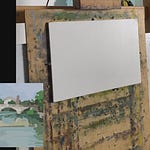Dear Subscribers,
The video above is the first part of the live painting class from 16th November. The second part, recorded after the class, will be posted in the next newsletter.
During the class, there was a question about the painting support I was using, which is something new I’ve been experimenting with. Historically, I’ve used oil-primed supports, but for this session, I worked on an acrylic gesso-primed plywood panel. To reduce absorbency, I sealed the surface with a coat of damar retouch varnish—a technique I picked up from Marc Dalessio and wanted to try.
I had some old damar crystals, which I dissolved in turpentine to make a concentrated solution, then diluted it further with more pure turpentine. Note that OMS (odourless mineral spirits) won’t work for this, as it doesn’t dissolve damar effectively. Given the toxicity of turpentine fumes, I prepared the solution in a well-ventilated space. I don’t recall the exact quantities I used, but there are plenty of recipes online, and I don’t think the ratios are particularly critical.
Lastly, a quick note about the video: there are a couple of moments where I lost connection with my camera, causing the video to freeze briefly. It reconnects quickly, so don’t worry—your device isn’t malfunctioning!
For this still life painting I decided to skip any preliminary drawing and focus entirely on colour massing. Many of you might already be familiar with Paul Ingrebretson’s YouTube channel. If not, I highly recommend it. Even if you don’t fully agree with his perspective, his insights are a great starting point for thinking practically about painting and developing your own explorations.
One concept he mentions is “coming out of the fog.” For me, this refers to prioritising the most obvious effects first—whether that’s value relationships, light effects (which inherently involve values), or general colour effects. This approach focuses on capturing the overall value and colour relationships of the subject through large, generalised masses of colour.
Drawing or shape aspect of the subject takes a backseat in the beginning—value and colour masses come first. There is no initial drawing and delineation of shapes. As these initial 'blobs' or colour notes are refined, the drawing and shapes naturally become more resolved. This is why, if you were to document the process, the painting might initially appear vague and uncertain but would gradually evolve into something more resolved and precise. If you look at Paul Ingbretson’s work, you can clearly see this method in action—it’s a fascinating process to observe.
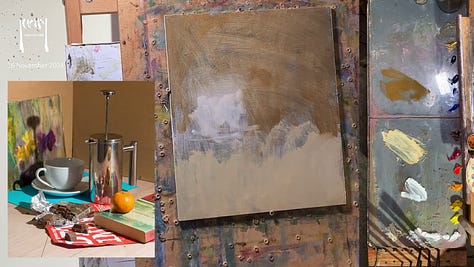
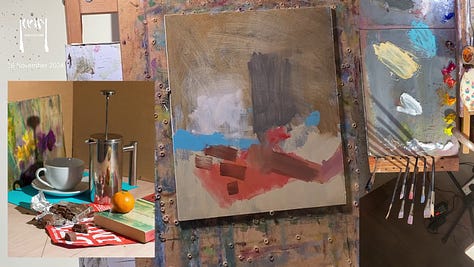
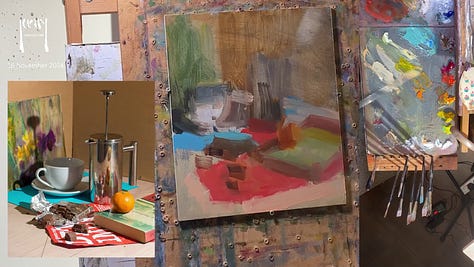
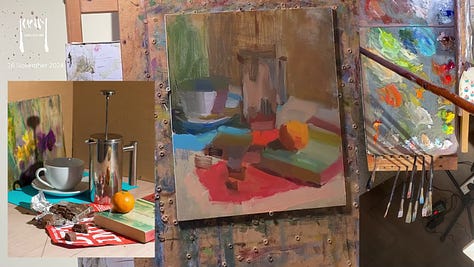
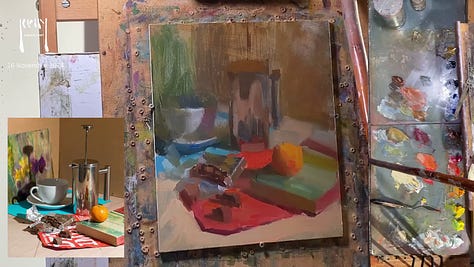
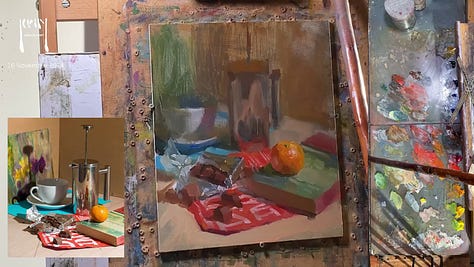
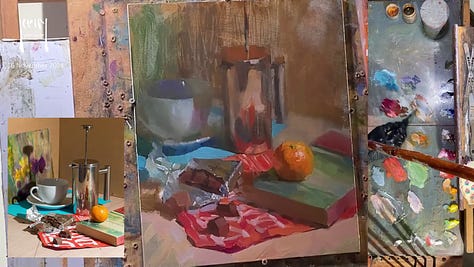
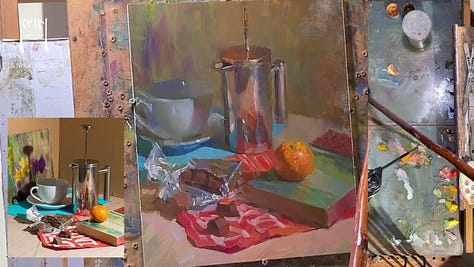
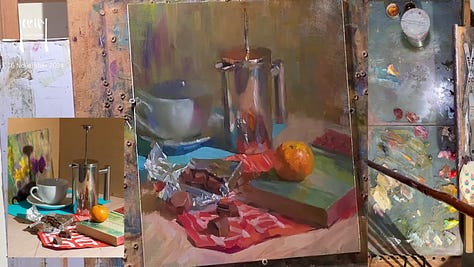
One thing that stands out to me when looking at the sequence above is how quickly the “big effects” are established—by around 1 hour into the painting process, as seen in image 4 (middle left). The rest of the time is spent refining these initial effects.
This highlights the value of having a process that prioritises a strong block-in. By "big effects" I mean the elements that immediately catch your eye—the most striking aspects of the scene in terms of shape, value, light, form, pattern, and composition (the arrangement of shapes). Establishing these early provides a solid foundation for the rest of the painting. In this case, there isn’t a clear point where one could definitively say, “the block-in is completed” and “this is the refinement of the block-in.” Instead, the entire process is essentially a continuous refinement of effects.
There was also a question about the permanence of Rose Madder (quincradone), which I occasionally use for florals. I mentioned the handprint.com website as a reference. Permanence of paint pigments is typically assessed through light exposure tests, though other environmental factors, such as humidity or chemical interactions, can also play a role. Permanence generally refers to fading or any alteration in colour—whether it be in hue, chroma, or value.
That said, the ratings provided by paint manufacturers and the lightfastness tests they use come with some degree of uncertainty and should be taken with caution, as this lightfastness tests page explains. Additionally, it’s worth noting that handprint.com focuses on watercolour paints, while oil and acrylic paints often have different ratings—generally more favourable, as far as I know.
One key point I reflect on regarding permanence is that no painting can ever be truly permanent. The real question is: what degree of noticeable alteration is acceptable from the time of creation? Should it endure 50 years? 100? 500? While I don’t have a definitive answer, I would hope a painting lasts at least a lifetime, with the understanding that some degree of alteration—particularly in hue and chroma—is likely. Value, however, tends to remain more stable over time.
Ultimately, it is the artist’s responsibility to avoid unreliable materials wherever possible, within their means, to create works that are relatively stable in appearance and can endure for as long as possible. An interesting irony is that if a work does manage to survive for a significant period, its inevitable alterations become part of its life and authenticity—elements that restorers then seek to preserve. For example, take at look at this restoration of an icon painting:
The next live class will be on Saturday 21st December, starting at 5pm BST (9am PDT). The link is at the very end of this email for paying subscribers.
The classes are typically about 3 hours long. Zoom login details are below, and you can join or leave at any time. If you can’t join for any reason or miss part of the session, I will be recording it and publishing via my newsletter and Substack afterwards. For the next class, I am open to requests, so let me know in the comments if there is something you would be interested to see me tackle, either in terms of subject or an aspect of the painting process. The classes are informal and an opportunity to chat about any aspects of painting that interest you.
I hope you find the recording interesting and look forward to seeing you in a future class!
Happy painting,
Alex












